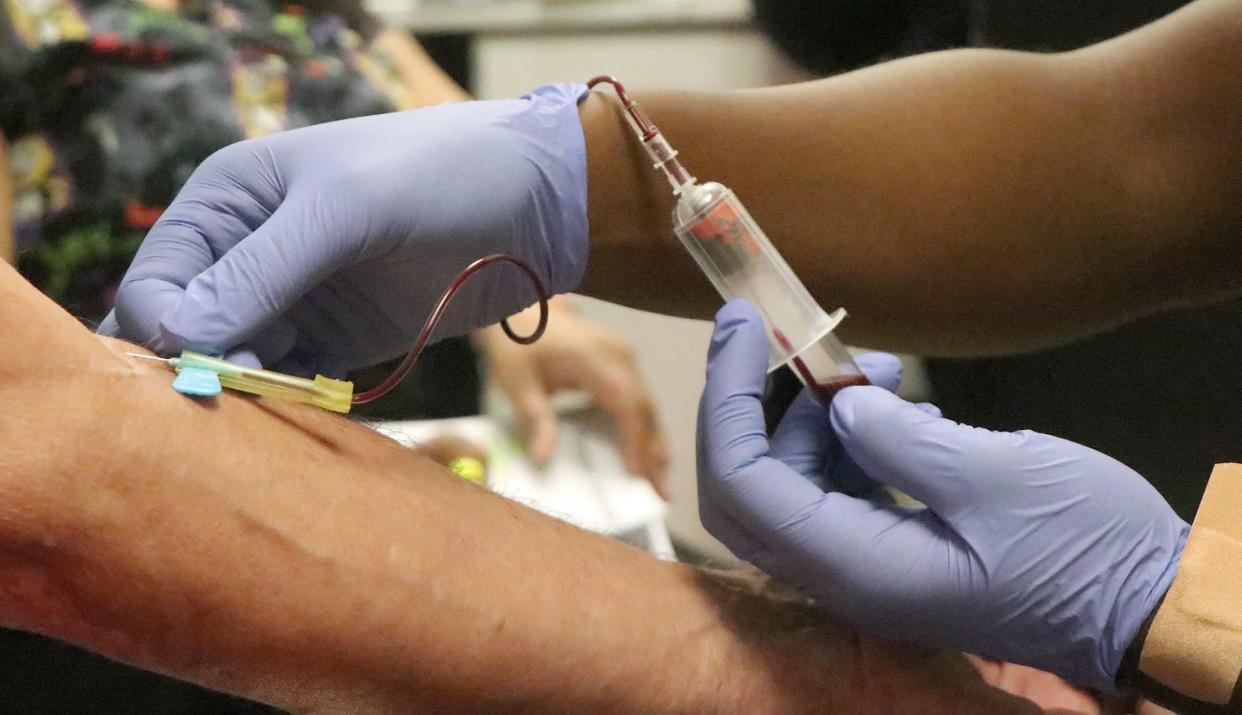Syphilis is on the rise in Oklahoma. Here’s what you need to know

The state Health Department warned recently that it was seeing a “sharp increase” in syphilis cases across the state, urging people to be aware of symptoms and seek out free testing.
Cases are on the rise nationally, too. In the most recent data from the Centers for Disease Control and Prevention, Oklahoma had the fourth highest rate of primary and secondary syphilis — the most contagious stages of the disease — in the country, behind Nevada, Mississippi and Alaska.
Syphilis cases had been steadily rising since about 2000, said William Andrews, public information officer with the state Health Department’s Sexual Health and Harm Reduction office.
“It had been taking these incremental steps up,” he said. “But now … we're watching the graph, and it's really starting to curve up sharply.”
A number of factors contribute to that increase, Andrews said, including fallout from the pandemic and an increase in methamphetamine use, which can make people take sexual risks they may not otherwise take.
The department has also seen a rise in congenital syphilis cases — which is when a baby is born with syphilis, which could mean serious health problems for the child.
The Health Department’s surveillance team hasn’t yet finalized 2021 case numbers. They’re expecting roughly 80 cases of congenital syphilis in Oklahoma — an increase from 53 in 2020. That’s up from just 3 cases in 2016.
Syphilis is an “equal opportunity infection,” Andrews said, and the Health Department sees syphilis affecting Oklahomans across the state and across demographic groups.
It can resemble other sexually transmitted diseases or even ingrown hairs, but syphilis can have serious consequences if it’s left untreated. Here’s what you need to know:
What is syphilis, and what does it look like?
Syphilis is a sexually transmitted infection spread through contact with syphilis sores during sex.
The infection is sometimes called the “great imitator,” because it can look like many other conditions, according to the Health Department.
“The first sign is usually just a small, painless sore at the site of infection,” Andrews said. “And it's often mistaken for a zipper cut or a shaving bump or ingrown hair.”
The next sign is often a rash, generally on the palms of the hands and feet.
Syphilis is most contagious during its primary and secondary stages. Symptoms from primary and secondary syphilis will go away with or without treatment, but without treatment, syphilis can stay in the body for years and cause other health issues affecting the heart, brain and nervous system.
Syphilis can also be passed from a pregnant mother to her child during pregnancy or childbirth. This congenital syphilis can cause blindness, deafness, premature birth or even stillbirth.
For more information about signs and symptoms, visit the Health Department's website.
How do you avoid getting or spreading syphilis?
Syphilis is spread through contact with syphilis sores during sex.
The only sure way to avoid syphilis or other STIs is by avoiding sexual contact, including oral, vaginal and anal sex. For those who are sexually active, you can lower your risk by being in a mutually monogamous relationship with a partner who has been tested and doesn’t have syphilis.
Condoms can also reduce the risk by preventing contact with sores.
Where can you get tested?
Confidential STI testing is available for free at all county health departments in the state. People can also talk with their health care providers about being tested for STIs including syphilis.
Health officials recommend everyone be tested for STIs at least once, and people at higher risk for infection should test more often.
“We have got to get to the point where talking about sexual health with your doctor is no different from talking about high blood pressure or diabetes,” Andrews said. “It is a health issue, and we've got to treat it as one.”
How is it treated?
Syphilis can be treated easily in its early stages with a shot of penicillin. Additional treatment might be needed in later stages of the infection.
It’s important to get treatment early, because syphilis left untreated can cause a host of serious problems even years down the line.
“It’s vitally important that people understand the signs and symptoms of syphilis,” Terrainia Harris, director of the Health Department's Sexual Health and Harm Reduction Service, said in a statement. “Treatment can cure the infection, but it can’t undo the damage that has already been done. We need to ensure that people get tested and receive treatment quickly.”
Syphilis and monkeypox — what to know
Epidemiologic data has shown that monkeypox infections can co-occur with sexually transmitted infections like syphilis and HIV.
Because of that, people with an HIV or syphilis diagnosis within the last year were added to the list of those eligible for a monkeypox vaccination, Health Department spokeswoman Erica Rankin-Riley said. To see the full list of who’s eligible, go to the department’s website.
This article originally appeared on Oklahoman: Syphilis cases increasing in Oklahoma. Here's what to know about it

